5 Tips for Getting Started with Plastic-Free Living
Could you live your life without plastic? Your answer to this will depend on your lifestyle, where you live and the kinds of things you like to do, the places available to you to shop and how much time you have. Whatever your situation is, I guarantee that you will be able to live with a little less plastic!
How much you choose to eliminate is up to you, but it all makes a difference.
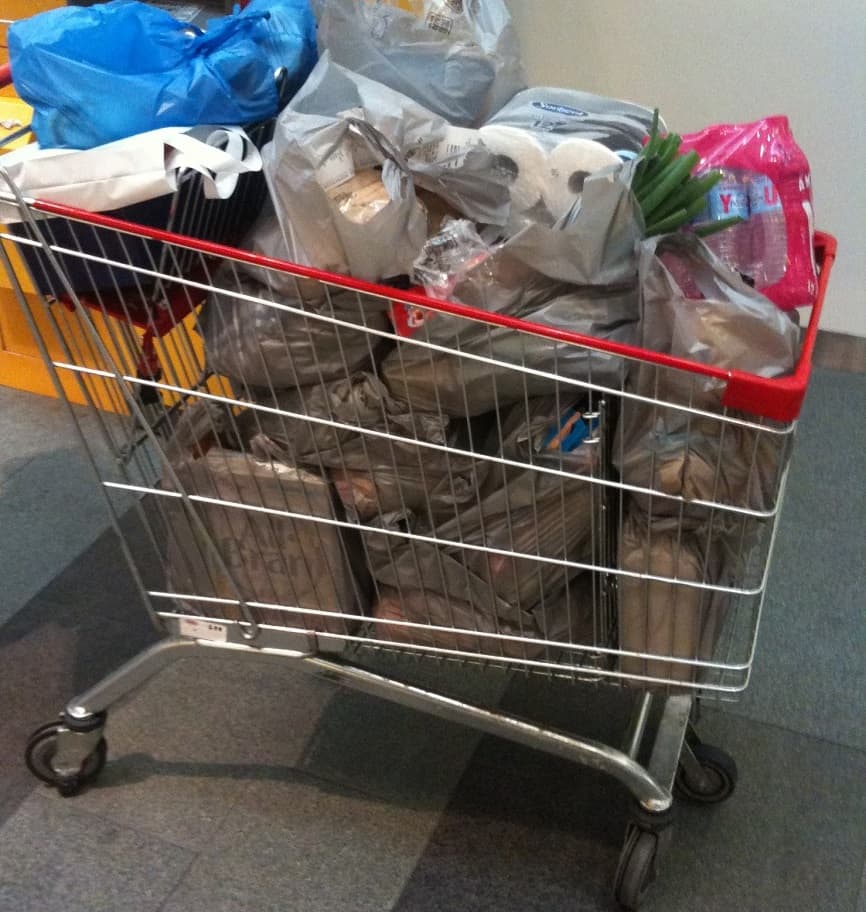
If your grocery shopping looks like this, then just a few minor changes will make a huge difference!
Many people feel overwhelmed before they even start… and so they don’t start. Or they make a mistake early on and give up, deciding that plastic-free living is something for the “too hard” basket.
The truth is, there is no need to panic, or to feel overwhelmed, or to do nothing simply because we can’t do everything. Change takes time: months, or even years. There is no rule that says everything must be successful on the first day!
There is no all-or-nothing approach to living without plastic: it is a sliding scale, and we just need to find out where we are personally comfortable to sit on the scale. We need to find our happy place: where we’ve made changes we’re comfortable with.
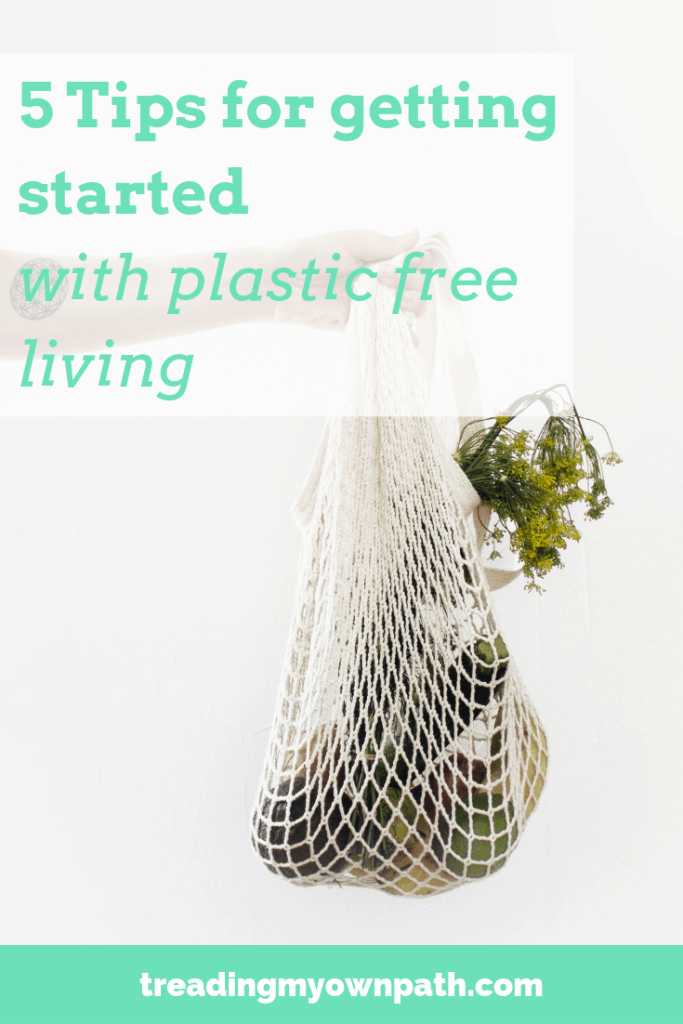
With Plastic Free July approaching, I like to spend time reflecting on my journey and the lessons I learned. This year is my 5th year of supporting the challenge, and I love to share what I’ve experienced with those that are just starting out, or taking it to the next level. If that’s you, read on!
1. Don’t try to make ALL the changes on the first day
It’s unlikely that you are beginning your plastic-free living challenge with a completely empty pantry, fridge and bathroom cabinets. It’s far more likely that you’ll already have food in the cupboard and toiletries in the shower.
Even if they are overpackaged in plastic, this is a good thing (for now!). It means that you can make changes slowly, one by one: as items are used up you can replace them with plastic-free alternatives.
When I signed up to Plastic Free July in 2012, the first things I had to buy were milk, bread, fresh fruit and vegetables. Cheese and yoghurt came later. Pantry staples like pasta and rice came later again. Condiments and specialist ingredients were further down the track.
I had so many products stockpiled in the bathroom (that I hadn’t really been aware of) that I didn’t replace anything here for a few weeks. In fact, it took me 18 months to use up every plastic-packaged item in my bathroom. Plastic-free living is a marathon, not a sprint.
2. Don’t think about the money – for now
If you’ve signed up to Plastic Free July, then you’ve committed to 31 days of living without plastic. I’m going to challenge you for those 31 days, not to think about the money you spend on groceries or toiletries.
Or not to stress about it, at least – there’s enough to worry about for now without having extra stress!
Plastic-free living can seem expensive at first, because buying food from deli counters or Farmers markets or in glass often does cost more than their cheap, lesser quality, plastic-packaged supermarket counterparts. Wholefoods and vegetables are more expensive than processed junk food, but they are also far better for us.
For these 31 days, give yourself a free pass. Open your mind to the possibilities. If your budget is small, maybe tighten the belt somewhere else – reduce how much you spend on alcohol, movie tickets, eating out or takeaway coffee for the month.
The truth is, in time, you’ll decide which things are worth spending the extra money on, and which things you’re happier without. The things you buy will change as you start to find new places to shop with different products on offer.
You’ll adjust your shopping and eating habits, and most people who live plastic-free and zero waste lifestyles find they actually spend less. But again, it takes time: I think it took us around 6 months to notice that our food bill had reduced.
3. There’s no need to rush out and buy anything new
There’s something about starting a new challenge that makes us want to rush out and buy new “stuff”. It’s because changing habits is hard, and buying stuff is easy… and by making a new purchase, we can feel that we’ve started on the journey.
There are a few things in the plastic-free living “toolkit” that make things easier, but you do not need to go out and make a purchase on the first day. Or even the first week. Or even at all!
Before you buy anything, you need to figure out if you are going to use it, and if you have something suitable at home already that you can use or repurpose. Take your time so that you can make the best choices. (This especially applies if you are concerned about your groceries budget.)
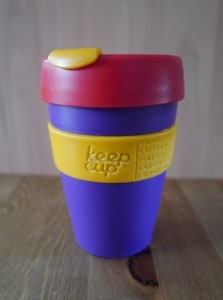
The only thing I purchased during my first Plastic Free July was a KeepCup (a reusable coffee cup), made from plastic.
A few weeks later I began to wonder whether buying a plastic cup for a plastic-free living challenge actually made sense (of course it doesn’t). I started thinking about combining plastic with hot liquids. I noticed the plastic started to absorb the coffee flavour.
Eventually I decided to replace it with a glass one (which I still have). Had I taken my time to think about it, I could have saved myself a wasted purchase.
4. Life from scratch…or not?
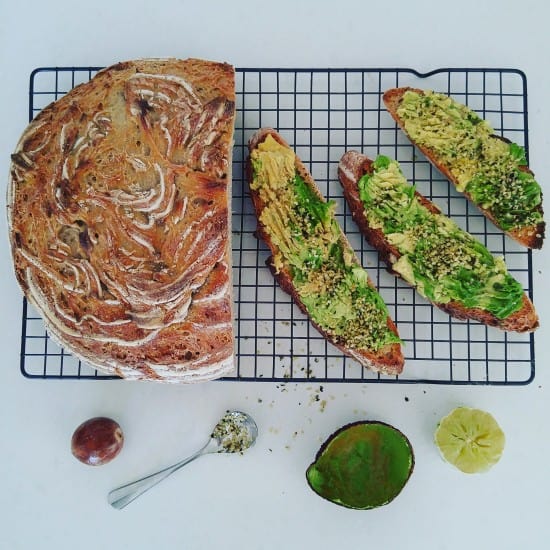
When I started down the plastic-free path, I had no intention of making my own bread or yoghurt or pickles. However, I began making all of these things, and for different reasons.
I used to buy bread at the Farmers Market, which meant I had to purchase my bread between 8am and 12noon on Saturdays. This meant that the rest of Saturday was put on hold until I’d secured the golden loaf of sourdough. Freshly baked artisan sourdough is delicious, but it’s also expensive. The Saturday morning stress and the money led me to ask myself the question – could I bake my own?
Once I tried baking sourdough for the first time, I was smitten. Freshly baked bread straight from the oven – there is no comparison. Now I have freshly baked bread whenever I need it, rather than just on Saturdays.
I started making yoghurt when I realised how simple it was. It involves heating up milk, cooling again, adding a small amount of culture (meaning old yoghurt) and placing somewhere warm for 12 hours (you can find yoghurt-making instructions here). Why was I buying it, carrying it home and taking the empty glass jars back when it took less time just to make my own?
I really enjoy cooking ,and baking, and making stuff from scratch. The more I’ve tried, the more I’ve got into it. But I don’t have time to do everything.
I don’t make my own pasta, for example. We can buy pasta from the bulk store, so why would I make my own? I tried making passata once, but it was so laborious I declared never again (or not for a long time). I don’t can my own tomatoes. I use the lazy person alternative – chopping up and using fresh tomatoes instead. It works well enough for me.
If something is impossible to find without plastic, or too expensive to buy, then I consider that I have three choices. Number 1: make my own. Number 2: find an alternative that I’m happy with. Number 3: go without.
Of course there is a fourth option – compromise – but I prefer to stick to one of the first three. That is enough choice for me.
5. The 80/20 Rule
I have a theory that 80% of everyday plastic is easy to eliminate, and the other 20% is the hard stuff. The easy things like plastic bags, plastic straws, takeaway packaging, disposable coffee cups, water and soft drinks bottles, multipacks, individual portions and serves can all be removed from our lives without too much stress.
It just takes a little bit of remembering, and maybe some practice, but not too much change.
The other 20% is the stuff that requires compromise, or bigger changes. Don’t worry about the hard 20%, at least not at first, and don’t give up on reducing the easy stuff just because you know the hard stuff will probably elude you.
Focus on the easy changes that have big wins.

There will always be people ahead of us on the journey, who have achieved things that we can only dream about. We can learn from them, and speed up our own journeys. The truth is, they all started at the same place.
They all started at the beginning.
They chose to make one change, and purchase one less plastic item, and then one more, and they just kept on going. Small steps, in the right direction. That is all it takes.
As always, now I’d love to hear your thoughts! Are you someone who has been on the plastic-free living or zero waste journey for a while, and if so, what tips would you give to someone starting out? Are you embracing the Plastic Free July challenge for the first time this year, and if so, do you have any concerns or questions? Which one of these lessons stands out most for you? Do you disagree with anything? Are there any other lessons that you’d like to add? Any other thoughts about plastic-free living or zero waste living, or the Plastic Free July challenge? I’d love to hear from you so please leave a comment below!
[leadpages_leadbox leadbox_id=140b48fc6639c5] [/leadpages_leadbox]
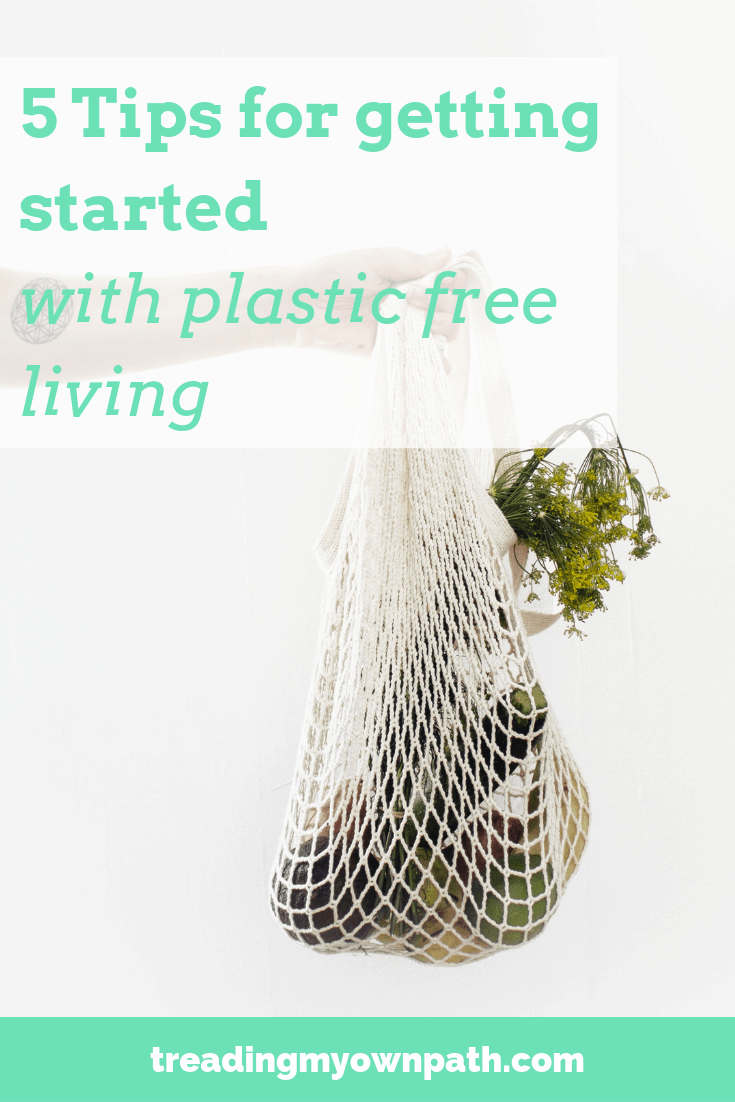

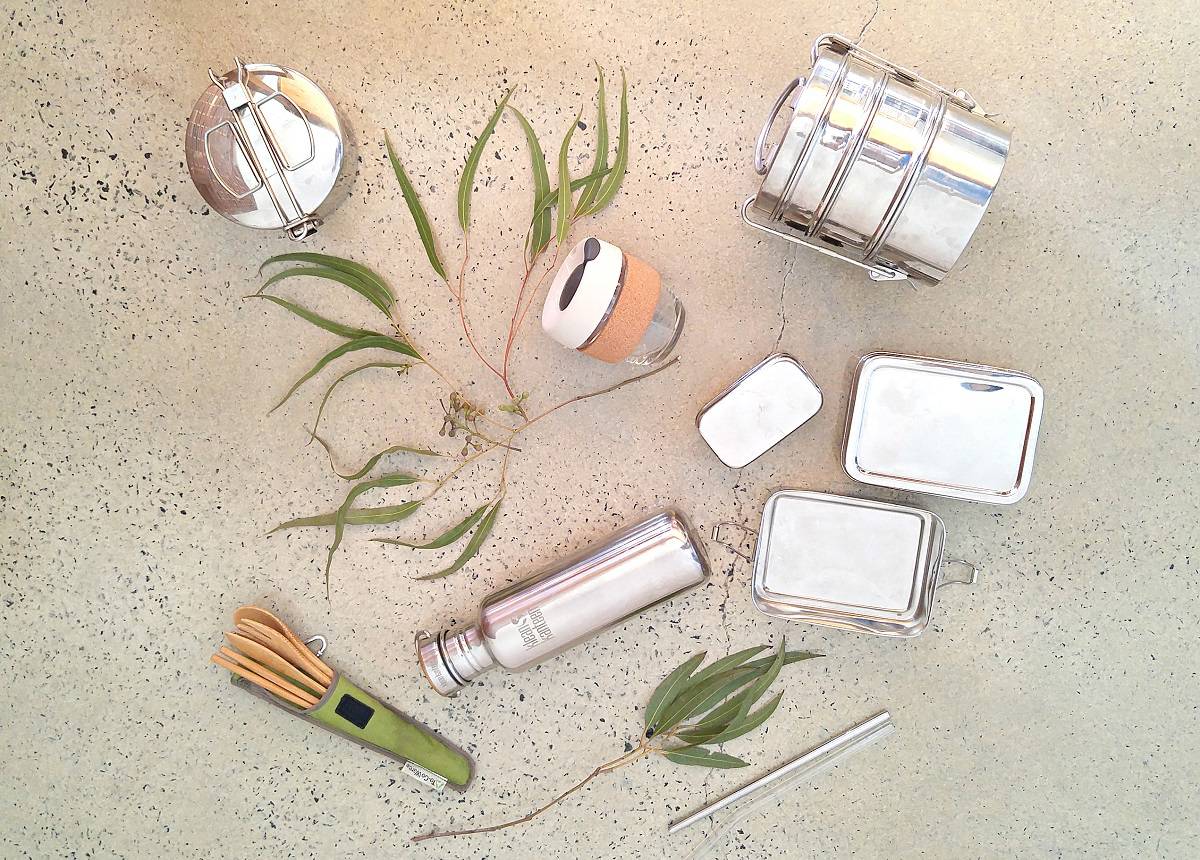

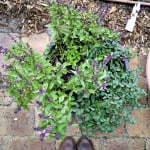
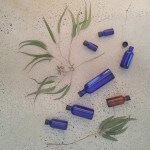
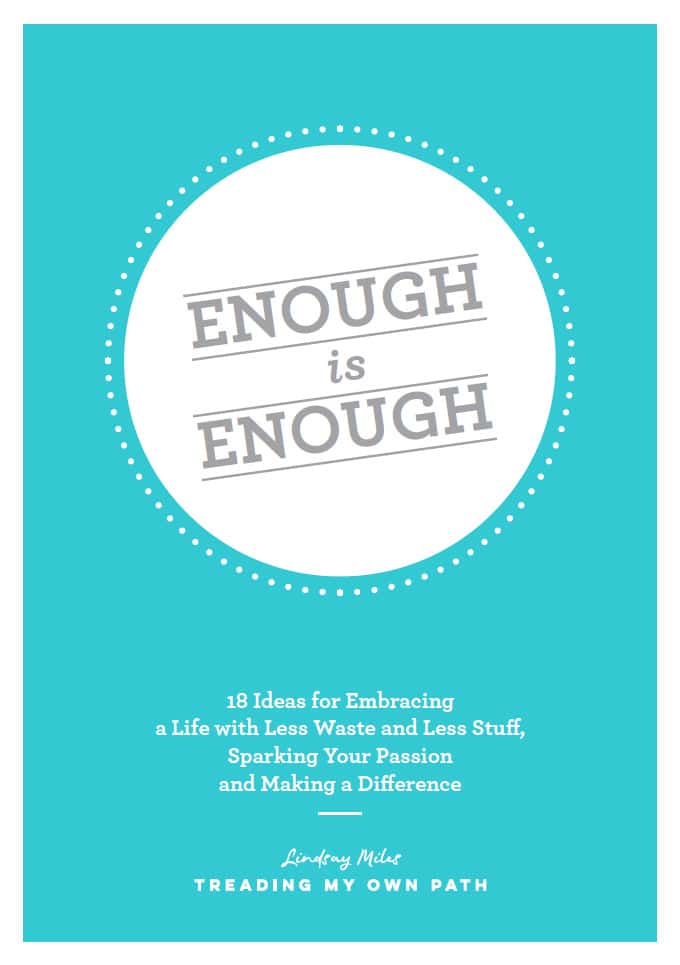
Great advice Lindsay, small steps and successes keep us motivated. And sometimes when life gets busy I slip back to using supermarket bags, but MOST of the time I remember my own :)
Thanks so much Liz, that’s just it – small steps. And it’s funny, when we look back over a year or two, all those small steps really add up and we can feel proud of what we’ve achieved. Sometimes in the day-to-day we just don’t notice!
I have a small reusable bag that lives in my handbag, and my husband has one that he keeps in his bag too. His is an Onya bag that fits in a small stuff sack and is probably the size of a small apple (and very light). Very handy! Would that work for you? (I’m trying to help wean you off those supermarket bags!)
I really liked reading this :)
I’m really trying to reduce the plastic we use, a lot is creeping in at the moment (because a year ago my partner and I bought a house and moved in together and he doesn’t quite ‘get’ eco friendlyness, and because the house is a doer upper and we don’t have kitchen cupboards or worktops yet and there are boxes and renovation things everywhere, oh yeah and we just got married! Aaand my work is going through a restructure! Things have been too stressful and chaotic!) I had systems and did a lot of cooking from scratch when I lived on my own, I can’t wait for things in the house to get sorted so I can make new systems and hopefully get my husband involved too!
I like your 80/20 theory, that seems doable for now!
Hi Susie and thanks! You do sound busy and life does seem a little crazy at your end ; ) But if plastic-free is in the back of your mind, then it will be ready when you are. At least you haven’t forgotten about it altogether in the chaos! Good luck with settling down and getting new routines in place. And definitely – start with the easy stuff! Why make things harder?
I didn’t find this very useful. I don’t use plastic bags for shopping – but as to the next step, I’m not sure what I’m meant to do. I don’t have a bulk food shop anywhere near where I live. And how or where do buy toiletries, makeup and cleaning products which aren’t in plastic?
Okay Samantha – let’s get into a little more detail! When I first started there were far less bulk stores close to me than there are now, and I did use the supermarket for quite a few things. Bulk stores do make it easier but it’s not impossible without! Whereabouts do you live? I might be able to put you in touch with somebody who lives a little closer to you.
As for where to begin – two great options are to either look at your rubbish bin, or look at your till receipts, and see what you buy and whether you can find alternatives or make your own. You could just choose one thing that you buy a lot of, or is particularly over-packaged, and start there. Google it and see if you can make your own. Some things are easier than you might think – and some things are way too much trouble! Totally up to you and how much time and patience you have! ; ) See what things you can find in the supermarket without plastic – I can buy oats, pasta, rice and couscous in plastic-free packaging, but not quinoa, for example. My shopping habits did change as a result of plastic-free living, as I bought more of the things that were easy to find and less of the things that weren’t!
Even if you can’t find things without plastic, you can choose to buy the least amount of packaging – eg buying one big tub of yoghurt rather than all the little ones, and portioning yourself. Much less waste overall!
As for toiletries, make-up and cleaning products, here’s previous posts I’ve written on the subject. You definitely don’t need to be buying lots of plastic bottles! simplicity is the key : )
Plastic-free bathroom https://treadingmyownpath.com/2015/03/24/a-guide-to-reducing-plastic-in-the-bathroom-part-1/
And the second part https://treadingmyownpath.com/2015/03/26/a-guide-to-reducing-plastic-in-the-bathroom-part-2/
This one is pretty old, but it sums up green cleaning: https://treadingmyownpath.com/2013/10/07/a-guide-to-green-cleaning-what-youll-need/
There’s loads more info in my book, but hopefully this is a start for you! : ) Lindsay x
Thank you for the great tips. I am almost 90% plastic free and going. Would you be able to give us a yoghurt recipe that doesn’t require the flask and thermometer?
Hi Jussara! : ) 90% plastic-free, that’s great! Go you! I use this recipe for making yoghurt https://treadingmyownpath.com/2013/04/22/how-to-make-your-own-natural-yoghurt/ I use a flask and a thermometer, but you can get away without the flask using a glass jar wrapped in a tea towel (or two (you can use string or elastic bands to hold in place). If your house is cold, keeping in the oven with the door closed and the light on will create a nice micro-enviroment – I know people who do this successfully.
As for not using a thermometer, it’s a little trickier but possible. You want to heat the milk to kill any nasties, but not to denature the proteins. So you want it hot, but not boiling. I find it usually gets pretty close to boiling when it hits the right temp, so I’d said heat it, and when you see it getting frothy (but not boiling) turn off the heat.
Next you want to cool it enough to not kill your yoghurt culture, but to be warm enough to keep things active. I usually pre-heat my flask so if you’re using a glass jar, I’d warm it a little first. 45 degrees is warmer than body temp, but not much. I think it takes about 15 mins to cool down – but this will vary depending on your room temp and how wide your saucepan is. If it’s too hot to touch, it’s still too hot!
What you’ll probably need to to is try it, and notice the visual signs and smells and use those. It should be fairly forgiving. Hope that helps! Let me know how you go!
What about disposing of animal waste without plastic? What to do with that dog poo and kitty litter?
Hi Katherine, great questions! With dogs, rather than using a plastic bag you can use newspaper to pick it up (my friend clips squares of newspaper to her dog lead with a bulldog clip). It is also possible to compost pet poo, or use a worm farm or a bokashi bin. The difference with normal composting and this is that you need to keep it separate (have a designated bin just for this) you don’t want to be spreading it on your veggies. It will also smell more than regular compost (which shouldn’t smell) but only when the lid is open. Clumping kitty litter (which is only bentonite clay) can be composted. With dog poo worm farms, you can use any container with a lid, cut the bottom off and big into the ground. You only want to be adding dog poo – any food scraps and the worms will be eating that instead! Plus if you’ve given your pet worming tablets, don’t add to a worm farm for a few weeks!
This is only a general guide and which method is best, where you put it etc would be dependent on where you live but try googling pet poo composting / worm farms / bokashi and see what you think of them all! Hope that helps! Lindsay x
Straws are where I’m at – I wanna buy one. But then I probably use a drink with a tore on average 1-2 times per month, it that. If I get a drink with a straw, it’s likely also in a take away cup (like a Boost juice or similar). In the most recent case, I can confirm it’s the sort of time even if I was with a straw, I wouldn’t have had my own cup. So I haven’t bought a reuable straw yet, despite ‘wanting to’. Thoughts?
I’m good with my reusable cup daily for coffee – it’s routine (so much so, the barrister hate when I revert to the plastic reusable one I have, and notes when I have no DIY cup!)
Hi Sarah! I have both a glass one and a stainless steel one, and whilst I don’t use them I often I find they are very useful to have. I lend them to people I’m with who need straws, show them to others and start conversations more than actually use them myself – and that is just as good! So I would say definitely get one. Those conversations are important to spread the message!
Plus there’s no reason why you can’t use the straw even if you don’t have your own cup – it’s not all or nothing! Remember it’s still one less piece of plastic, and straws are one of the more problematic types of plastic, and one of the most common items found in beach clean ups.
If you do get one, I’d recommend glass. Easier to clean and feel nicer in your mouth, plus you can choose the width depending on what you like to drink (Glass Dharma have the biggest range of options, I think).
Let me know what you decide to do!
I have been trying to eliminate plastic from my life for years, I won’t say how many as it will make me feel old. I would say that the 80% went a long time ago. Now, people say “Thank you for thinking about the environment” when I refuse a bag. For years I used to get “Oh but you have to have a bag” and I would argue in shops to please be allowed to leave with my purchase and it’s receipt but without the plastic bag that I didn’t want. So, I can say in some ways it is getting better. Then on the other hand why do my cherry tomatoes have to come in a plastic punnet wrapped in plastic, organic tomatoes wrapped in a double layer of plastic? My solution I am trying to grow my own. No growers markets seems to sell them. I have done the how can I eliminate level, how can I replace level. So, now I am on a what can I grow level. I feel I might need to revisit the what can I cook/bake level. So, this month I will check that I am refusing as much as is possible and try to see where can I improve.
Thanks for the great article.
Hi Christina, thanks so much for your comment and I love what you’ve said about levels! I definitely feel like there are levels – but I love how perfectly you’ve put it! I think revisiting the cook/bake level is definitely worthwhile, as we forget about making stuff, and often there are solutions that are far easier than we expected. Plus cooking is such a fun way to be creative : )
PS now we have a garden we are really embracing the “grow our own” level!
Good luck!
Great article. I would love to here more about your Glass Coffee Cup. Does it have any kind of lid on it? I’ve been using a glass jar but it’s not the most convenient solution
Hi Amy, thanks! Yes, the glass coffee cup does have a plastic lid. The band around the cup is made from cork. I like that it is a standard size, so baristas don’t turn their nose up, and it has a good seal. Maybe one day there will be a completely plastic-free solution. I’d be worried with a glass jar that it might break. I know many people use them, but knowing my luck… ; )
Great ideas. If everyone was to contribute in any small way, all would go to making their ecological footprint smaller, everybody can make a difference purely by changing their pattern of behaviour. Great Read.
Hi Belinda, thank you so much for your comment :) I couldn’t agree more. One person can make a difference, and if all those people add up that’s a big change :)
I couldn’t agree more especially with the first point “Don’t try to make ALL the changes on the first day”. That’s the way I have been tackling my plastic free journey too. I began my journey July 2016 and have slow & steadily been reducing my use of plastic. With a family that is not as enthusiastic as me about it I would like to emphasize the phrase ‘slow & steady’ because you know what they say…slow & steady wins the race. My first and obvious step was to use cloth/canvas bags (which I already had lying around my house) instead of plastic bags. Each thing that came in front of me that needed to be changed, I changed to plastic free items like toothbrushes that are now bamboo toothbrushes, straws that are now permanent use stainless steel straws, cheap plastic washing baskets that broke are now wicker baskets, liquid shampoo is now shampoo bars, zip lock bags used for school lunches are now swapped to permanent use plastic sandwich boxes that were already sitting unused in my cupboard, menstrual cup instead of tampons and pads. The great thing about this is that in some cases when you make the switch it will also save you money in the long run which is awesome.
Hi Frances, huge apologies for missing this when you wrote it and taking so long to respond! Oh, it is so true and so obvious, yet a hurdle so many fall at! (I’m pretty sure I’m guilty of this at times.) Slow and steady does win the race! ;)
The other thing that can come with trying to make all the changes on the first day, is that we go out and buy a heap of new stuff – and often stuff we “think” we need! Which can end up not being the case. I took a similar approach to you – replacing things slowly as they wore out. Alongside my wooden dishbrush I still have a round plastic dish brush from 2012. It’s not broken so I still use it! I was lucky that having moved countries just a few months before, I didn’t have a lot of stuff – and therefore much less plastic to replace. What an interesting journey it might have been had I not already decluttered!
Thanks for taking the time to write and good luck with your next steps! :)
I am a newbie to plastic free.
My biggest challenge at the moment is dog poo.
We have two dogs and the plastic option is by far the easiest both with respect to hygiene (and smells) I know you have suggested picking it up with newspaper. That is what we did (in the old days when I was a kid) and then into the bin. But then the bins were small and garbage was collected twice a week. A friend also used to use his wormfarm for dog poo.
Any ideas and thoughts greatly appreciated.
Hi Jackie! We use newspaper or the wrappers that come on the Who Gives a Crap toilet paper – a very handy size! We have a dog poo worm farm that we have to carry the poo home to as the dog refuses to go in the yard! If it’s raining or we are too far away then it will go in the landfill bin.
You can also buy biodegradable dog poo bags. Whilst I don’t love these kinds of things, especially if they are destined for landfill, the ones made out of waste corn are probably a more eco-friendly option than fossil fuel virgin plastic!
Hope that helps?!
Fabulous – much appreciated
Keep up the good work
Jackie
Unfortunately, I find myself in the “unlikely” lot. As I move out on my own for the first time, I’m stocking an empty home, including fridge, drawers, cabinets, etc. I wanted to start right and bring little to no plastic into the home, but that just isn’t happening. It takes so long to figure out where to find the plastic-free alternatives or how to make my own alternatives, so I’m still consuming plastic products for now. However, as you say, it is easy to stop buying disposable water bottles and using plastic grocery bags. The rest will come little by little. Thanks for the post!
Hi Raux, please don’t despair! I think it’s easy to think that we can make changes overnight – but the reality is, change always takes time. Especially when we’re trying to make a lot of changes at once. Know that if you keep going, you will get there – and don’t give up! :)
I’ve found second hand/charity stores are a great way to furnish a house but be environmentally friendly. I also feel reusing plastic items such as cutlery trays, storage & lunch boxes is better than buying new non-plastic items in terms of waste and energy used to create new products. It also reduces landfill and packaging material.
Hi, I am a beginner in this community, my first plastic-free July is on and I am really enthusiasted about the challenge. But as I read the recommendations what to do to reduce our plastic consumption or waste at all, I found out that many of them are done naturally in my family. For example buying the secondhand clothes at the charity market is something what helps my daughters to have their wardrobes full of great things for really a little money and moreover, their clothes are original. Baking cakes and cooking is a great opportunity to spend time together in a kitchen doing something productive and creative together.
However, I must say that there are some plastic things which I do not want to get rid of, as I find them useful. The classical example is a plastic lunchbox. It’s hard to be broken, it’ s light, so I find it a good option for me as well as for my daughters.
Sorry, I don’t speak about my husband as well. He is not very keen on that idea of reducing waste&plastic, however, we are trying to persuade him. Slowly. But some small steps have already been done. But I am really happy, that both of my daughters are enthusiasted about this lifestyle and hopefully, they will spread it wider, among their schoolmates, friends etc.
Hi Katya, thank you so much for sharing! Love that you were already on the journey without even realising it :) Of course, some plastic things can be useful – says I, typing on my laptop with keys made of plastic. It’s just the unnecessary and single-use stuff we need to refuse.
It’s good to hear your daughters are on board. In my experience, husbands come round eventually. Sometimes it just takes a looooong while to sink in. Maybe they are waiting to check it’s not a fad, and maybe they just expect it to be more work – and when they realise it isn’t, well, it isn’t so bad after all! Have faith, and time is on our side :)
Good luck with it all!
You are quite right; each of us can make a difference in our own lives. But we mustn’t forget that changing society begins with communal activity! We must work together in projects like beach and street litter audits and clean-ups, make (Boomerang) bags and get them into large supermarkets, and pressure all levels of government to take responsibility for this enormous problem.
And, of course, businesses must be persuaded to carry their stewardship of their products right through to disposal of the packaging or sell their products in bulk. We can’t get lost in the small details of our own lives! There’s so much to do as communities and societies. I am personally dismayed by the recent revelations on the ABC about corruption in recycling. I have no answers, only commiserations to you all for being younger than me, with the prospect of a world completely trashed in your future.
Hi Debbie, oh I couldn’t agree more! But there’s only so much we can take on at once. I think change starts at the personal level, and then expands from there. Once we’ve changed our habits, the next step is to help others begin to change theirs!
That’s why I don’t love the “waste jar” thing (i.e. collecting all your landfill waste in a jar). I think it can lead to being focussed on the smallest of things that don’t really matter. Will being able to take a single bread tag and two bottle caps out of my waste jar make that much difference to the planet? As a measuring tool for personal use it can be helpful, and some people find it motivating, but I say, once you’re thinking about the jar it’s time to reach out into the community! :)
Thank you for this inspiring read! I started reducing plastic a couple of months ago but I live in a remote town in Northern Botswana where we don’t have the luxury of shopping at bulk stores and recycling is non existent. I’ve made some small changes though and I feel positive about the difference I am making in my own home. I’ve managed to convince my local butcher to pack my meat in my own glass jars, but I can only get a small variety of vegetables without plastic, so I have started growing my own. I have not taken a plastic bag from a store in months, although the staff at the fresh veg section don’t quite understand why I weigh my onions loose and not in the plastic bag… One step at a time. :)
I am considering giving as much plastic as I can back to the supermarket at checkout. Why do I need vegetables in plastic bags. I noticed a woman at the supermarket checkout the other day purchase a plastic bag to put her potatoes in, that bag already had a handle????
I’ve heard about this from many people Paul, and whilst I think it’s great to make a stand, I just want to put a gentle reminder out there to anyone considering this that it is important not to take it out on whoever is working at the checkout. An alternative solution might be to ask to speak to the manager and hand the packaging directly to them, or even write to the appropriate head office department (Corporate Social Responsibility would be a good place to start).
Thank you for the tips … I think there were some valuable lessons there. I’m doing plastic free July for the first time and I am trying to put together a workshop in SA (Jozi, Durban, Cape Town) where I want to show people how to reduce the need for cling wrap etc by making beeswax wraps . I’m passionate about making a change and an impact !!!
Hi, I’ve been reading about being “Free” from most things. Especially plastic. I’ve made bags with water resistant liners for most leftovers. I even use glass jars to put meats or vegetables in the frig. I would use newspapers for the liners of my trash but I’m afraid the trash collector wouldn’t appreciate it. Some day soon I hope there is a liner for trash that would be earth friendly.